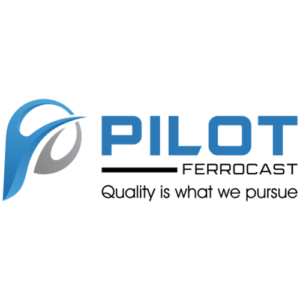Pilot Ferrocast Pvt Ltd has an installed capacity of 800 Metric Tons per annum of Investment Casting and an expansion capacity of 1400 Metric tons per annum.
Manufacturing investment casting right from 0.060 Grams to 85 Kilograms weight per piece.

Pilot Ferrocast Pvt Ltd has an installed capacity of 800 Metric Tons per annum of Investment Casting and an expansion capacity of 1400 Metric tons per annum.
Manufacturing investment casting right from 0.060 Grams to 85 Kilograms weight per piece.

3D modeling, either customer-submitted or in-house designed, is included with the process sheet to guarantee tooling accuracy. With over 35 years of experience in tool making, PFPL engineers are experts in gating tooling models with pinpoint precision. Samples are run to verify tooling accuracy. Visit our casting tooling page for additional information.

Virgin Or Re-Claimed wax in semi-liquid form is injected in a single or multi-cavity die tool by using a Wax injection press (Fully Auto, Semi-Auto, Manually Operated). These processes will give a wax pattern which will be the model of parts intended for casting.

The clean wax pattern is assembled on a runner with all handling and knockoff arrangements for the next process. This process is backed by a method Engineer.

Firstly, Primary Coating is applied to wax pattern assembly by using ceramic slurry & Zircon sand. The surface finish depends on the primary coating & wax pattern surface. Then repeated backup coating is applied with a defined drying time to form a self-supporting shell.

In the De-waxing stage, wax is melted out by applying steam pressure using an Autoclave. Now, shells having cavities inside are ready to pour.

Shells are preheated at specific temperatures & times. Specific metal is melted in an induction melting furnace. De-gassed & De-slagged molten metal is poured into the preheated shells at a specific temperature.

Castings are heat treated in-house, according to the required standard in a programmable heat treatment furnace.

Heat-treated parts are sent for gate grinding & surface cleaning depending upon the requirement of finish products.

Castings are machined in-house using various numerical control CNC, VMC, and VTL machines to achieve dimensional accuracy as per the drawings.

The parts are inspected for surface and sub-surface defects. Visual and liquid penetrant inspection is done for surface defect identification. Radiography and magnetic particle inspection are done for subsurface defect detection. Pressure testing ensures leak-free components.

Finished products of investment casting are inspected visually & dimensionally as per customer-supplied drawings, purchase orders & technical datasheets.